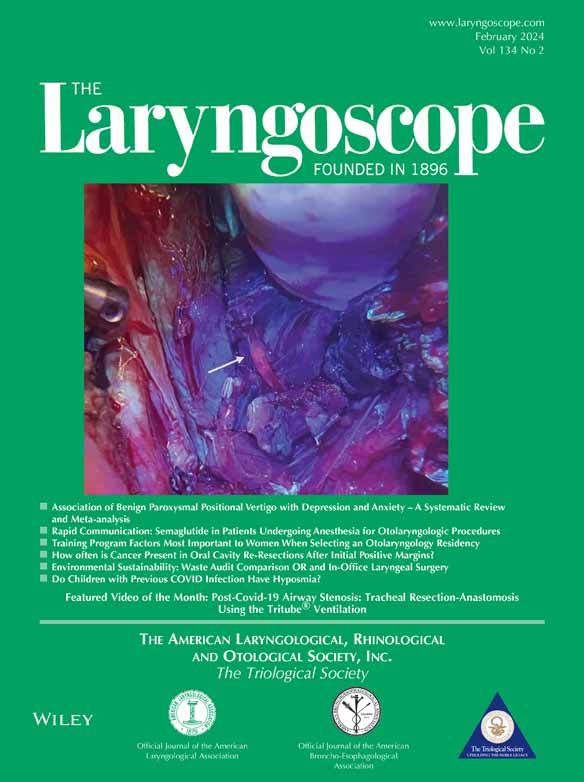Outcomes Following Treatment for Carotid Blowout in Head and Neck Cancer Patients
The authors have no funding, financial relationships, or conflicts of interest to disclose.
The study was presented as poster at 2023 Combined Sections Meeting, Triological Society, San Diego, California, USA, January 28th 2023.
Abstract
Objective
The aim of the study was to determine outcomes after interventional radiology treatment of carotid blowout.
Methods
Patients with head and neck cancer and who received interventional radiology treatment for carotid blowout between 2000 and 2022 were included. Pre-treatment, treatment, and post-treatment variables were evaluated.
Results
Fourteen patients met inclusion criteria. Eleven patients (78.6%) had a history of radiation. Twelve (85.7%) blowouts occurred within 6 months of recent intervention. Initial treatment was with stenting (n = 9, 64.3%), coil embolization (n = 4, 28.6%), or both (n = 1, 7.1%). Six patients (42.9%) underwent subsequent carotid bypass. Morbidity following treatment included stroke (n = 1) and rebleeding (n = 4). Six-month survival was 57.1%. Of the patients who survived past six months, 5/8 were treated with carotid bypass and coverage. Four patients died of cancer progression, three of rebleeding, and three of medical complications.
Conclusion
The majority of carotid blowout occurs within 6 months of surgery or radiation. Many who survive will die of cancer progression or medical illness. Carotid bypass with flap coverage may be a worthwhile treatment for carotid blowout and should be considered as an adjunct to endovascular treatment.
Level of Evidence
4 Laryngoscope, 134:695–700, 2024




